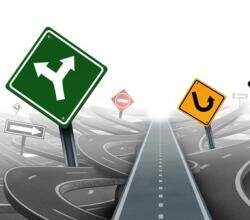By now it’s very apparent that technology has had a major impact on shaping the general healthcare industry. With smart devices sweeping everyday life, patients and medical staff capitalize on the benefits of connected technology in a multitude of ways. Particularly mobile technology advancements in healthcare have put the integration of gamification at the forefront.
What is gamification in healthcare?
Gamification simply means implementing the principles and design concepts built into games and placing them in an environment that normally does not act as a platform for gaming. In healthcare, gaming has been introduced in the format of mobile applications and virtual reality to help patients, doctors and medical staff progress in whatever area of focus needed. Whether it’s forming personal fitness and eating habits, learning new techniques for the operating floor or improving procedures with medical equipment such as surgical headlights, players can participate via a digital setting. What drives interaction is the challenges, achievement, obstacles and immersive experience games hold. By incentivizing people to walk more everyday with daily competitions through social connection or ensuring proper procedure is taken to save a patient in a simulated VR setting, the feeling of accomplishment is met with gaming and works to benefit the well being of all parties.
What games are patients and doctors using?
There are thousands of game applications that have emerged in healthcare. Many promote cognitive health by exercising and stimulating certain functions of the brain, thus preventing diseases such as Alzheimer’s. Some advanced games have incorporated virtual reality to help burn victims deal with pain. For practicing physicians or those in training, game apps like Prognosis give medical practitioners the chance to test out their decision-making skills in a risk-free environment and learn clinical knowledge in minutes—something very welcomed in the busy lives of these life-saving professionals. Wearables, one of the latest innovations in the tech world, are especially fit for the fitness sector of the industry. Personal health-tracking devices, such as the ever-trendy Fitbit, can be worn on the wrist to clock steps and activity, and then used to motivate wearers with a paired mobile application. The app not only shows progress made in a visually engaging manner, it also offers a social component to give it a competitive edge. Walkers compete with their friends also connected to the app and gain all the more reason to win both in the app and for their health.
How it’s becoming a business.
Healthcare is a necessary evil in many people’s eyes and it’s here to stay put. This opportunity is fueling the gaming industry to grow and expand games into the health and wellness world. Some of the first to realize this strategic bridge between gaming and medicine were health insurance companies like UnitedHealth Group. They began developing games for their clients, which not only aligns their brand to do-good reputation, but also taps into greater customer loyalty, both financially and emotionally, from an already invested crowd. Additionally, thousands of start-up publishers have teamed up with the medical world to develop games and are ultimately making money from the cause. The combination of health, games and business is proving to be a win-win situation that will only continue to expand gamification in healthcare.
Gamification in healthcare has been made possible due to the rapid advancements in technology and mobile devices. Gaming itself, is projected to grow to a $100 billion industry by 2018, and as the world adapts more and more to a digital and mobile lifestyle, the positive momentum and popular use of health-related games will push forward in both game and healthcare industries.










